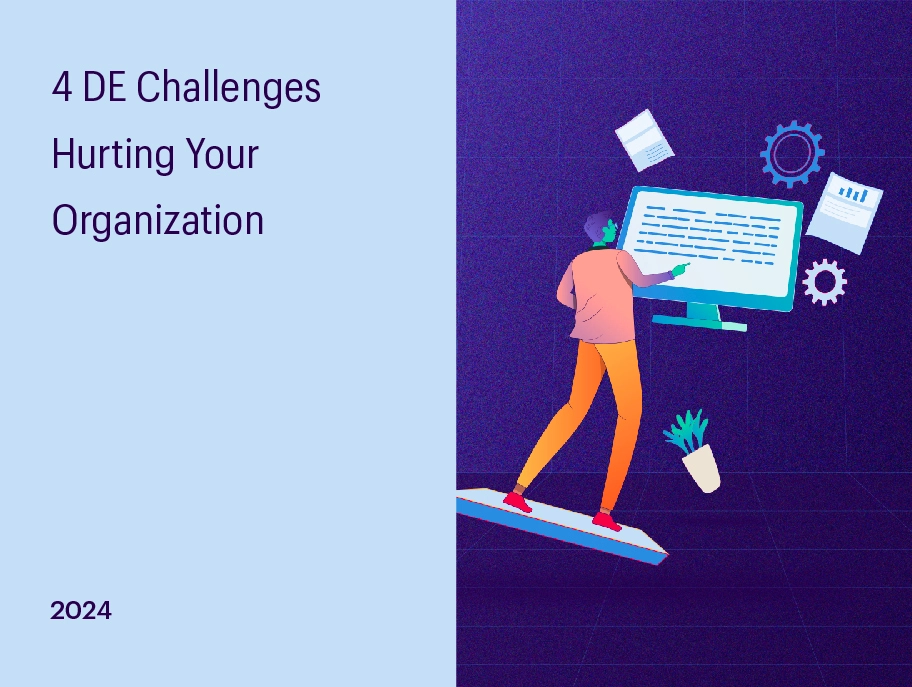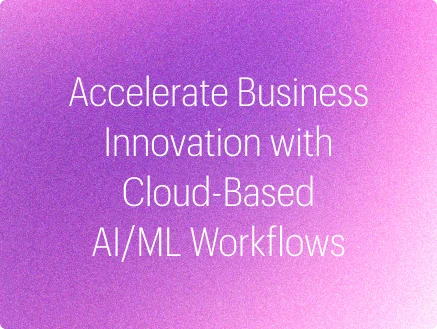The proliferation of cloud computing has revolutionized the way businesses operate, offering scalability, flexibility, and cost-effectiveness. Businesses of all sizes are rapidly adopting cloud technologies to accelerate growth, scale operations, and drive innovation. However, as cloud environments expand, the need for robust data security has never been greater. Data breaches, regulatory violations, and cyber-attacks can cost companies millions, not only in terms of finances but also in reputation. Ensuring that cloud environments are secure from threats requires adhering to industry best practices that safeguard sensitive information while still enabling operational efficiency.
Explore some of the best practices for data security in cloud environments and learn more from multiple use cases that emphasize the importance of robust measures to protect information and drive operational scale for technology units.
Why Cloud Security Matters for Scaling Operations?
Moving to the cloud offers numerous advantages, including reduced IT overhead, scalability, and flexibility. However, the convenience of the cloud can endanger organizations if security measures are not prioritized. For businesses aiming to expand, these risks can become exponentially more significant.
With increasing regulatory frameworks such as GDPR and CCPA, organizations must not only safeguard their data but also comply with stringent legal obligations. Data security is not just an IT issue; it directly impacts customer trust, market reputation, and revenue streams.
Implementing best practices for data security is not just a necessity but a strategic imperative for businesses looking to scale their technology operations securely.
Best Practices for Data Security in Cloud Environments
1. Data Encryption
Encryption is the cornerstone of data security. Both data at rest and in transit should be encrypted, using industry-standard protocols, to prevent unauthorized access.
For example, Amazon S3 offers Server-Side Encryption (SSE) and client-side encryption, allowing businesses to encrypt their data before uploading it. By ensuring that encryption keys are managed correctly (often using Key Management Services like AWS KMS), businesses add a vital layer of security that scales with their operations.
- Data at Rest: Use strong encryption algorithms like AES-256 to protect stored data.
- Data in Transit: Implement TLS/SSL protocols to secure data during transmission.
2. Access Control and Identity Management
Proper IAM frameworks ensure that only authorized users can access specific resources. Implementing role-based access control (RBAC) allows organizations to grant permissions based on user roles, limiting the risk of unauthorized access.
For example, Capital One, a leader in the banking industry, uses AWS IAM to manage its cloud resources. After a security breach in 2019 [1], Capital One doubled down on using fine-grained IAM policies to ensure the least privilege principle was enforced across its cloud infrastructure. This approach helped strengthen its security posture significantly.
3. Data Loss Prevention (DLP)
DLP systems monitor and control the movement of sensitive data. Cloud-native DLP solutions from providers like Google Cloud and Microsoft Azure help businesses detect anomalies and prevent unauthorized data transfers. Implementing automated DLP policies can scale with growing operations while ensuring sensitive data never leaves protected environments.
For instance, Adobe, a company renowned for its creative software, employs Azure’s DLP policies to secure its customer data in the cloud, ensuring compliance with global regulations such as GDPR.
4. Regular Audits and Compliance Checks
Cloud environments must be regularly audited to ensure compliance with industry regulations and security standards. Audits help organizations identify vulnerabilities and ensure that proper security controls are in place.
Leading organizations like Netflix employ continuous auditing mechanisms, using AWS CloudTrail to log, monitor, and audit account activity across their cloud environment. This allows Netflix to maintain a high level of security while innovating and scaling rapidly.
- Compliance Certifications: Ensure your cloud provider is compliant with standards like GDPR, HIPAA, and ISO 27001.
- Vulnerability Assessments: Conduct regular assessments to identify and mitigate security risks.
5. Incident Response and Disaster Recovery Plans
In the event of a security breach, businesses must be prepared with a robust incident response plan. This includes ensuring backups are regularly maintained and tested. Disaster recovery strategies should include replication of critical workloads across multiple cloud regions to minimize downtime and data loss.
A prime example of the importance of disaster recovery is the Equifax data breach in 2017 [2], where over 147 million people’s personal data was compromised. Equifax failed to act promptly on known vulnerabilities. Post-breach, the company revamped its security policies, emphasizing the need for quicker incident response and better data recovery strategies.
6. Zero Trust Architecture
As companies scale, traditional perimeter-based security approaches no longer suffice. Zero Trust architecture assumes that threats can originate both outside and within the network, and as such, no one is trusted by default. By continuously verifying every access request, Zero Trust architecture ensures enhanced security across all endpoints.
Google is a strong proponent of Zero Trust security. The tech giant implemented a Zero Trust model called “BeyondCorp,” [3]which allows employees to work securely from untrusted networks without the need for a VPN, thus improving security while maintaining operational efficiency.
MathCo’s Way to Secure Data on the Cloud
1. Securing Client Data in a Hybrid Cloud Environment
An American worldwide clothing and accessories retailer—with thousands of stores across the U.S. and a significant online presence—was facing a growing challenge of handling and securing vast amounts of customer data. The company had collected large volumes of information, including personally identifiable information (PII), transaction histories, and preferences, which were key to their analytics for improving customer experiences, optimizing inventory, and forecasting trends. The client wanted to ensure sensitive customer data remained secure while keeping operational costs manageable and supporting its customers’ rapidly growing data needs.
Primary Challenges
- Protecting Sensitive Customer Data: The retailer needed to secure a mix of structured and unstructured data, including payment details and PII, while running analytics and personalization algorithms.
- Compliance with Data Privacy Laws: The company operated in multiple regions, requiring compliance with regulations such as GDPR (for European customers), CCPA (for Californian customers), and PCI-DSS for payment security.
- Secure Data Sharing Between Teams: The retailer needed to enable collaboration between different business units, such as marketing, merchandising, and finance, while maintaining strict data access controls.
MathCo’s Data Security Implementation
- Fine-Grained Access Control: MathCo leveraged Databricks Unity Catalog to define and enforce Role-Based Access Controls (RBAC) at the catalog, schema, table, and view levels, ensuring that users/teams could only access data relevant to their roles or purpose.
- Row-Level Security for PII: MathCo designed and applied row-level security policies to restrict access to sensitive customer records, ensuring only specific roles, such as the data science team working on personalization algorithms, could access raw customer data. Marketing teams could access anonymized datasets for campaign analysis without compromising privacy.
- Encryption at Rest Using Azure Key Vault: All data stored in Azure Data Lake Storage (ADLS) was encrypted using Azure Key Vault managed keys. This allowed the retailer to maintain full control over the encryption process, ensuring compliance with PCI-DSS standards for protecting payment data.
- Delta Sharing for Secure Data Exchange: For cross-team collaboration, MathCo implemented Delta Sharing, a secure way to share live data between different business units, enabling teams to work on the latest datasets without making copies of the data, reducing the risk of accidental data exposure.
Outcome
By adopting these security measures, MathCo significantly improved governance and compliance for customer data across the retailer’s distributed teams, ensuring robust control over data access and usage, while also maintaining clear audit trails for regulatory reporting.
2. Implementing Zero Trust Architecture for a Cloud-Native Platform
With an increase in ransomware attacks and a growing customer base, a Japanese multinational manufacturing company wanted to ensure that its cloud infrastructure was resilient to cyber threats and that security practices were in place to protect against evolving threats without heavy investment in manual processes. With manufacturing plants and offices located in various countries, the company needed to protect sensitive intellectual property, proprietary designs, and operational data from evolving cyber threats.
Challenges
- Complex Supply Chain: The company collaborated with numerous suppliers, partners, and contractors, creating a complex ecosystem where data sharing was essential but posed security risks.
- Regulatory Compliance: The company had to comply with various industry standards and regulations, including ISO/IEC 27001 and the NIST Cybersecurity Framework, while managing data across multiple jurisdictions.
- Legacy Systems Integration: Integrating legacy manufacturing systems with modern cloud infrastructure while maintaining security controls presented significant challenges.
MathCo’s Data Security Implementation
- Zero Trust Architecture: MathCo adopted a Zero Trust model across the client’s Azure infrastructure. By assuming that every request, internal or external, is a potential threat, the company implemented strict identity verification for every user and system accessing the network.
- Azure Identity Protection and Conditional Access: Using Azure Active Directory (AD), MathCo set up conditional access policies that evaluated user risk in real time. Only users meeting specific conditions (such as accessing the network from approved locations or devices) were granted access.
- Data Loss Prevention (DLP): MathCo integrated Azure DLP policies to prevent sensitive data, such as customer or IP information, from being shared externally. Automated alerts notified the security team whenever suspicious data activity was detected.
- Azure Network Security Groups (NSG): NSGs were implemented to enforce inbound and outbound traffic rules at the subnet and individual VM levels, controlling which applications could communicate with each other.
Outcome
By implementing Zero Trust Architecture on the Azure platform, MathCo significantly enhanced the data security framework for the client, ensuring that sensitive information was safeguarded across its global operations. This comprehensive approach to security not only protected intellectual property and employee data but also ensured compliance with various regulatory requirements.
Real-World Insights: How Industry Leaders Secure the Cloud
1. Capital One: A Comprehensive Security Overhaul Post-Breach [4]
Capital One, one of the largest banks in the U.S., embarked on a cloud-first strategy by migrating its infrastructure to AWS. This decision enabled rapid scalability and innovation. However, a data breach in 2019 exposed the need for stricter security measures. The breach compromised sensitive data, affecting 100 million customers, primarily due to misconfigured AWS S3 buckets and unauthorized access via a misused identity credential.
Key Security Enhancements Post-Breach
- Enhanced IAM Policies: Capital One refined its AWS Identity and Access Management (IAM) policies, implementing the least privilege principle and enforcing strict role-based access control (RBAC).
- Encryption by Default: Capital One made encryption mandatory for all sensitive data, whether at rest or in transit, leveraging AWS Key Management Service (KMS) for key management and automatic encryption of S3 objects.
- Continuous Monitoring and Audits: The company began using AWS Config and AWS CloudTrail to continuously audit and monitor cloud resources, ensuring all actions are logged and evaluated against compliance policies.
2. Adobe: Ensuring Cloud Data Security Through Continuous Improvement [5]
Adobe, a leader in digital media and marketing software, handles vast amounts of customer data across its cloud-based Creative Cloud and Document Cloud platforms. To protect this data, Adobe employs a combination of encryption, Data Loss Prevention (DLP), and stringent access control policies across its hybrid cloud infrastructure.
Key Security Enhancements
- Multi-Layered Encryption: Adobe ensures that all data is encrypted both at rest and in transit using AES-256 encryption standards. They also manage encryption keys through Azure Key Vault, ensuring only authorized users have access to sensitive data.
- Data Loss Prevention (DLP): Adobe uses Microsoft Azure’s DLP tools to monitor, detect, and prevent unauthorized access or transfers of sensitive customer data. This system helps Adobe meet regulatory requirements like GDPR and CCPA.
Conclusion
These case studies illustrate that security is not a one-time solution but an ongoing effort that evolves with an organization’s needs. By learning from industry leaders and leveraging cloud-native security tools, businesses can protect their data, drive growth, and maintain customer trust.
Implementing these data security best practices is essential for safeguarding information in cloud environments and driving the scale of operations for technology units. By adopting a proactive approach to data security, businesses can mitigate risks, ensure compliance, and build trust with their customers.
As cloud technologies continue to evolve, staying informed about the latest security trends and best practices will be crucial for maintaining a robust security posture. Investing in data security is not just a defensive measure; it is a strategic investment that can drive business growth and innovation.
Bibliography
[1] 2019 Capital One cyber incident: What happened. Capital One. (n.d.). https://www.capitalone.com/digital/facts2019/.
[2] Center, E. P. I. (n.d.). Epic – Equifax Data Breach. Electronic Privacy Information Center. https://archive.epic.org/privacy/data-breach/equifax/.
[3] Google. (n.d.). Beyondcorp Zero Trust Enterprise Security. Google. https://cloud.google.com/beyondcorp.
[4] AWS Innovator: Capital One | Case Studies, videos and customer stories. AWS Amazon. (n.d.). https://aws.amazon.com/solutions/case-studies/innovators/capital-one/.
[5] Adobe Trust Center | Products Security, privacy, availability. Adobe. (n.d.). https://www.adobe.com/trust.html.



